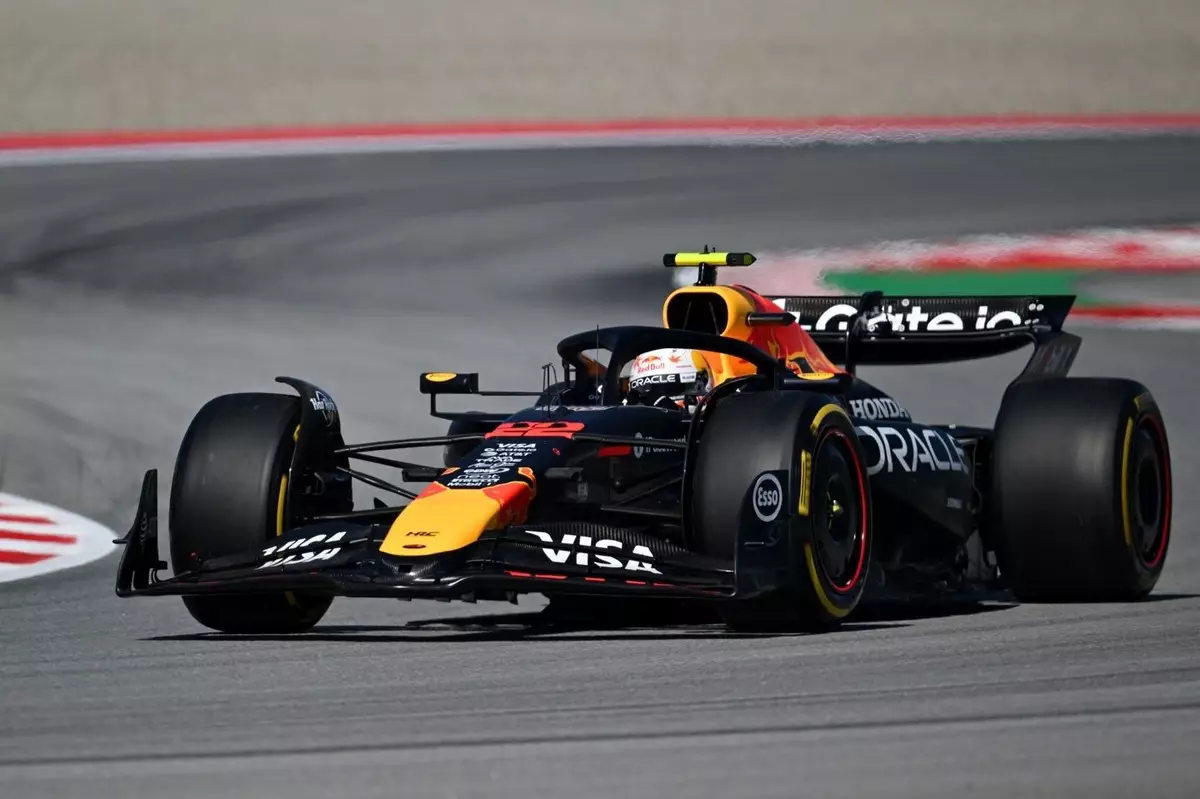Yuki Tsunoda is no stranger to the complexities of Formula 1 racing, yet at the Spanish Grand Prix, he found himself grappling with an inexplicable lack of speed. In an arena where milliseconds dictate success or failure, Tsunoda’s bafflement over his performance during the practice sessions shed light on broader issues that can affect even the most talented drivers. While he completed both sessions smoothly without apparent mechanical failure, his times revealed a stark gap in performance when compared to his teammate, Max Verstappen. Here lies a quintessential problem faced by many in the fast-paced world of motorsport: how does one confront an unseen barrier?
Tsunoda’s acknowledgment of his pace troubles serves as a stark reminder that racing is not just about raw talent but also about fine-tuning a myriad of factors that go into vehicle performance and driver coordination. The exact reasons behind his challenging runs at the Circuit de Barcelona-Catalunya remain undisclosed. On Twitter and other social media platforms, fans and analysts weighed in, speculating on his car’s setup, psychological readiness, and race strategy—adding another layer of complexity to an already intricate equation.
Communication and Team Dynamics
One notable aspect of Tsunoda’s situation is his candid communication over team radio. He described suffering from notable sliding at the front and rear of the car, yet seemed bewildered by the lack of tangible solutions to rectify the issues he experienced. This open dialogue underscores the importance of effective communication within a team at such high levels of competition. If a driver can articulate specific issues, it can allow engineers to make swift adjustments, but the lack of clarity left Tsunoda sounding both frustrated and vulnerable. Formula 1 requires a symbiosis between driver and machine, and when one part falters, the effects resonate throughout the entire team.
His comments point to a more profound existential question about self-assessment and accountability in the sport. Tsunoda’s desire to identify limitations reflects a depth of understanding that goes beyond mere execution; he is seeking insights into both his capabilities and the car’s evolving demands. This mindset is crucial for drivers looking to stay competitive and continuously improve.
The Dance of Tire Management
Another critical element witnessed during the practice sessions was Tsunoda’s tire management—an often underestimated aspect of racing that can significantly influence lap times. GPS data provided insights revealing his struggles to maintain speed through high-pressure turns, particularly at Turns 9 and 10, putting him at a further disadvantage against Verstappen. The nuances of tire degradation and performance in hot conditions complicate matters significantly, as drivers must navigate both the psychological and physical pressures of managing their vehicles on the grid.
Tsunoda’s observations of his tire performance illustrate the art of racing as much as the science, where handling can mean the difference between mediocre and exceptional speed. Verstappen, while commenting on his own day as “OK,” revealed a sense of cautious optimism. He noted improvement over previous Fridays but echoed his desire for a more comfortable setup. This dynamic of striving for constant improvement is at the heart of Formula 1 culture, where complacency can be fatal in a sport driven by innovation.
Psychological Fortitude in Racing
What stands out amidst the mechanical discussions of downforce and tire strategies is the psychological aspect of racing. Tsunoda spoke of potentially having a “longer night” to work through the complexities of his day—a sentiment that echoes the mental resilience required to thrive in Formula 1. The pressure to perform can weigh heavily, especially when one is unable to pinpoint the source of performance issues. This battle becomes even more pronounced during a race weekend when the time for reflection, analysis, and improvements is acutely limited.
Although Tsunoda’s admission of feeling unmoored as he faced the daunting prospect of finding solutions reflects his introspection, it serves as a stark reminder of the mental complexities involved in high-performance sports. The intersection of mental health and athletic performance in Formula 1 is a conversation worth having, as it affects not only physical outcomes but also personal well-being.
Ultimately, Tsunoda’s experience at the Spanish Grand Prix spotlights the multifaceted challenges of Formula 1. From mechanical performance and tire management to the psychological fortitude required to adapt and improve, each aspect is interconnected in the grand pursuit of speed. The journey for Tsunoda and his team will require patience, collaboration, and perhaps most importantly, a willingness to embrace the unknown.

